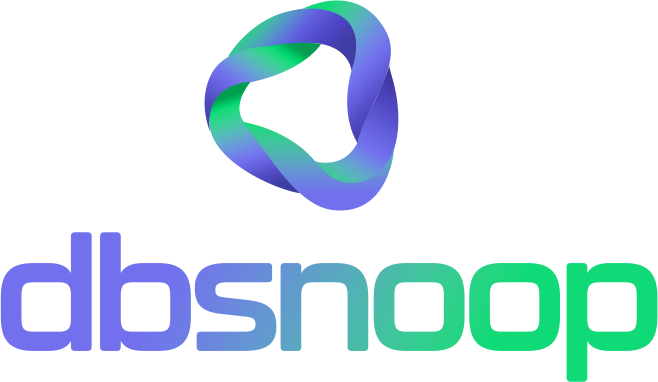
Have you ever wondered how large companies can monitor and manage IT infrastructures such as databases? The answer lies in data observability—a key part of ensuring that everything functions as it should, especially in environments dealing with massive amounts of information and critical operations.
Data observability goes beyond simple performance monitoring, metrics analysis, and tracebacks to offer a detailed view of how data systems are behaving and detect potential issues before they turn into a headache.
One of the most modern tools in this field is the dbsnOOp Flightdeck, a platform designed to improve data observability and infrastructure management. With it, you can have a detailed view of the performance, security, and compliance of your systems. In this article, let’s dive into the concept of data observability and show how Flightdeck can help your company keep everything under control.
What is Data Observability?
Data observability is the ability to fully understand and monitor the flow of information in IT systems such as networks, databases, applications, and environments in both online and cloud services. Unlike traditional monitoring, which focuses on isolated data, data observability analyzes the entire behavior of the system, allowing you to identify interactions and problems before they escalate.
There are three key pillars of data observability:
- Logs: Registrations that show errors or system activities.
- Metrics: Data used to measure system performance and “health.”
- Tracing: Records that show how data flows through infrastructure.
These pillars are the foundation of the dbsnOOp Flightdeck, which offers advanced tools to collect, analyze, and visualize this information in real time. The result? Total observability of your infrastructure.
Flightdeck Features from dbsnOOp
Flightdeck was designed to help companies of various sizes manage their environments, offering a range of features that facilitate monitoring, management, and observability of data. Let’s look at some of them:
1. Monitoring Web & URL Failures
With a dedicated panel to monitor failures in web services, APIs, and websites, Flightdeck quickly identifies any interruptions with Data Observability. Best of all: it alerts you in real-time, allowing your team to solve the problem immediately.
Practical example: Companies relying on e-commerce or SaaS services can avoid losses by ensuring that their customers have a smooth experience.
2. Disk Capacity Monitoring
For those working with large volumes of data, Flightdeck is crucial in monitoring disk capacity. It alerts you when limits are near and helps plan storage expansions, preventing unpleasant surprises.
Practical example: IT teams can monitor the storage capacity to prevent bottlenecks and ensure systems run uninterrupted.
3. Metadata and Queries Inventory
Flightdeck also offers a complete metadata inventory. This means that it collects detailed information about servers, schemas, tables, columns, and more, making life easier for your IT team.
Practical example: With an up-to-date inventory, teams can use integrations with ERP or CRM systems to ensure a more efficient data handling within their data warehouses.
4. Data Sensitivity Identification & LGPD Compliance
Flightdeck uses artificial intelligence to automatically identify sensitive personal data, helping your company comply with LGPD (General Data Protection Law) effortlessly.
Practical example: Companies storing personal data can use this feature to ensure they are following data protection laws and avoid legal penalties.
5. AI-Powered Automated Query Writing
Want to optimize the time spent writing complex queries? Flightdeck uses AI to generate complete SQL commands automatically, speeding up the process and reducing human error.
Practical example: Developers and IT professionals can speed up reports and queries, handling large volumes of data more efficiently.
6. MTTA and MTTR Reduction
With Flightdeck, you can reduce the average time to detection (MTTA) and the average time to recovery (MTTR) through Data Observability. The platform identifies problems quickly and offers automated solutions, allowing you to act before problems cause bigger damage.
Practical example: Companies can prevent downtime, avoid losses on e-commerce platforms, and maintain stable operations with reliable system availability.
Why Choose dbsnOOp Flightdeck?
Flightdeck offers several advantages for companies needing to have real-time insights into their data infrastructure:
- Security and compliance: The platform offers security features and compliance with LGPD to protect personal data.
- Complete data observability: With complete observability, you will detect and act on potential problems before they escalate.
- AI automation: Artificial intelligence helps automate complex queries and improve performance.
- Cost optimization: With the automation of processes and reduction of human error, you will have financial and time savings.
Conclusion
In a world where data systems are becoming increasingly complex, data observability is no longer a luxury—it’s a necessity. dbsnOOp Flightdeck offers a robust and integrated platform to monitor, protect, and optimize your data infrastructure efficiently. If you want to improve the security, performance, and operational continuity of your business, Flightdeck is the ideal solution.
Give it a try for 14 days, no burocracy, no credit card
Learn more about Flightdeck!


